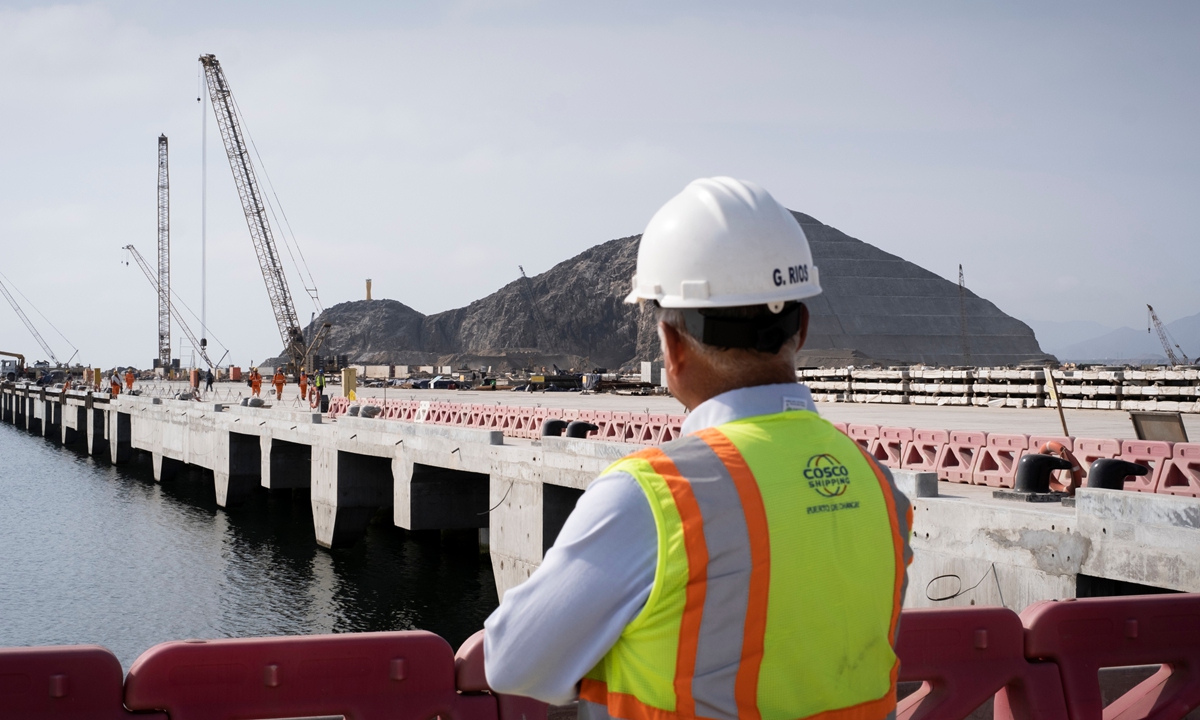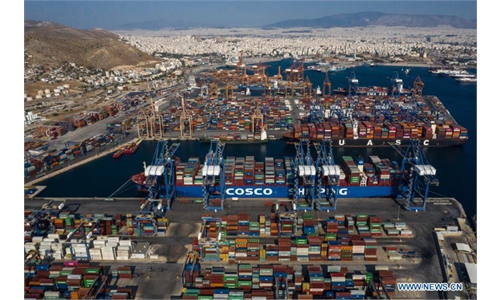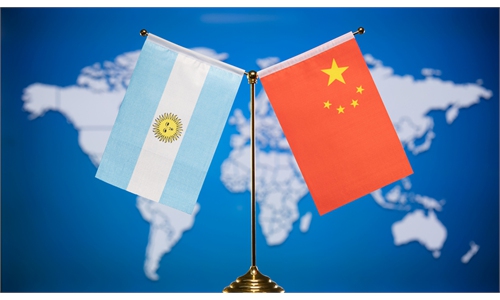
A staff stands at the construction site of the Chancay Port in Chancay, Peru, on March 5, 2024. Photo: VCG
China's infrastructure investments in Latin America, such as Peru's Chancay Port, sometimes raise concerns in the US over competition for regional influence. However, from a broader perspective, cooperation between China and regional countries actually presents more opportunities for collaboration for the US rather than rivalry.
An executive from COSCO Shipping, the Chancay Port's operator, said that the port will initially serve a direct route to Shanghai and operate two container ships a week beginning late next month after its official inauguration, Reuters reported on Saturday.
As a landmark project under the Belt and Road Initiative (BRI) in Latin America, the Chancay Port not only serves the interests of both China and Peru, but also provides new opportunities and possibilities for trade between South America and Asia. While attracting great attention in Peru and the Latin American region, the port's construction has also raised concerns in the US in recent years.
It is not uncommon to see US media outlets like The Wall Street Journal claiming that the port project in Peru is "rattling the US." Such concerns may stem from China's increasing economic engagement with Latin America, which American politicians fear could undermine US influence in the region. However, the thinking may be somewhat narrow-minded, reflecting a zero-sum game mentality.
China's collaborative projects with Peru are not intended to counter any other nation but rather to foster mutual benefits and win-win outcomes. Trade between China and Peru, as well as with the broader South American region, is substantial and has the potential to grow much further. The construction of Chancay Port exemplifies the cooperation between the two sides, and many more collaborative projects could be expected.
For China, as the Chancay Port will cut the time it takes to ship products from Latin America to Asia, the new port will offer a more cost-effective route for trade with Latin America, which will be conducive to Chinese companies' global exploration.
Peru is also full of expectations for the port, not only because it will bolster the country's position in global trade, but also due to its potential to boost local employment, stimulate the growth of local industries, improve logistical efficiency and lower trade costs, thereby increasing the international competitiveness of Peruvian products.
Additionally, the port is likely to attract more foreign direct investment, further diversifying Peru's economy.
It is important to note that the Chancay Port is not solely for the use of China and Peru. Rather, cooperation between China and Peru is inclusive, aiming for a mutually beneficial and win-win development model that welcomes broad participation by other partners.
Peru actively encourages infrastructure investment by various countries, including the US. For instance, Peru's Foreign Minister Javier González-Olaechea once said that if the US is concerned about China's growing presence in Peru, then it should step up its own investments, adding that "everyone is welcome" to invest there, The Wall Street Journal reported.
Through investments in infrastructure construction, coupled with the provision of advanced technology and financial support, China plays a pivotal role in assisting Latin American countries to enhance their infrastructure and ramp up their industrial competitiveness. This collaborative model is not only in line with the developmental interests of Latin American nations but also offers new opportunities for cooperation with Western countries, including the US.
If anything, the Chancay Port serves as a prime example of China's strength and extensive experience in infrastructure construction, which is precisely what the US lacks. The US excels in high technology, financial services and a few other sectors. The potential for a synergistic partnership between China's infrastructure capabilities and America's technological and financial prowess presents a unique opportunity for comprehensive development in the South American region. This complementary cooperation promises to enhance the prosperity and stability of South America, and it will be conducive to the long-term interests of the US too.
It is sincerely hoped the US will stop perceiving China's global development through the lens of hostility. Instead, adopting a more constructive approach that actively engages in global and regional development initiatives would be far more beneficial. A mindset rooted in geopolitical zero-sum gambit creates unnecessary distraction for the US and undermines its potential to benefit from regional development.



